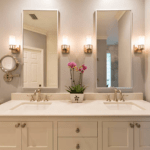In today’s digital age, entertainment has evolved beyond traditional formats, with immersive experiences becoming increasingly sought after. One such experience that has gained popularity in recent years is the home projector setup. Transforming your living space into a personal cinema, a home projector offers a larger-than-life viewing experience that rivals that of a traditional movie theater. In this comprehensive guide, we will explore how you can elevate your entertainment with the ultimate home projector experience.
Understanding Home Projectors
Before diving into the intricacies of creating the ultimate home projector experience, it’s important to understand what home projectors are and how they work.
What is a Home Projector?
A home projector is a device that projects images or videos onto a screen or flat surface using light. It typically consists of a light source, imaging technology (such as LCD or DLP), optics for focusing the image, and various input ports for connecting to media sources.
How Do Home Projectors Work?
Home projectors work by using light to project images or videos from a media source onto a screen or surface. The image is created by passing light through an imaging element (such as an LCD panel or DLP chip), which modulates the light to produce the desired image. The projected image can be adjusted in size and focus to suit the viewing environment.
Key Features of Home Projectors
When choosing a home projector, there are several key features to consider to ensure you create the ultimate viewing experience:
- Resolution: The resolution of a projector determines the clarity and detail of the projected image. Common resolutions include HD (1280×720 pixels), Full HD (1920×1080 pixels), and 4K Ultra HD (3840×2160 pixels). Higher resolutions offer sharper images and greater detail.
- Brightness: Projector brightness is measured in lumens and determines how well the image will be visible in various lighting conditions. For home use, a projector with a brightness of 1500 to 3000 lumens is typically sufficient for most environments.
- Contrast Ratio: Contrast ratio refers to the difference between the brightest and darkest parts of an image. A higher contrast ratio results in better image quality with more vibrant colors and deeper blacks.
- Throw Distance: The throw distance is the distance between the projector and the screen, which determines the size of the projected image. Different projectors have different throw ratios, so it’s important to choose one that suits your viewing space.
- Connectivity Options: Look for projectors with a variety of connectivity options, such as HDMI, USB, and wireless connectivity, to ensure compatibility with your media sources and devices.
- Keystone Correction: Keystone correction allows you to adjust the shape of the projected image to compensate for distortion caused by the projector not being perfectly aligned with the screen.
- Lens Shift: Lens shift allows you to physically adjust the position of the lens to achieve the desired image position without having to move the projector itself.
Creating the Ultimate Home Projector Setup
Now that you understand the key features of home projectors, let’s explore how you can create the ultimate home projector setup for an immersive viewing experience.
1. Choose the Right Projector
The first step in creating the ultimate home projector setup is choosing the right projector for your needs. Consider factors such as resolution, brightness, contrast ratio, throw distance, and connectivity options to find a projector that suits your viewing environment and preferences.
2. Select an Ideal Location
Choose an ideal location for mounting or placing the projector, taking into account factors such as screen size, throw distance, and viewing angle. Ideally, the projector should be positioned centrally and at the appropriate height to achieve the desired image size and clarity.
3. Invest in a Quality Screen
Invest in a quality projection screen or surface to enhance image quality and maximize the viewing experience. Choose a screen size and material that suits your viewing space and ambient lighting conditions for optimal performance.
4. Set Up Audio System
Pair your home projector with a high-quality audio system to complement the visual experience with immersive sound. Consider options such as soundbars, surround sound systems, or standalone speakers to create a cinematic audio experience that rivals that of a traditional movie theater.
5. Optimize Viewing Environment
Optimize the viewing environment by minimizing ambient light and controlling glare to improve image visibility and clarity. Consider using blackout curtains or blinds to block out external light sources and create a darkened viewing space for a more immersive experience.
6. Calibrate Settings
Take the time to calibrate the projector settings, including brightness, contrast, color temperature, and keystone correction, to achieve the best possible image quality. Use calibration tools or test patterns to fine-tune the projector settings for optimal performance in your viewing environment.
7. Arrange Seating
Arrange seating to ensure optimal viewing angles and comfort for all viewers. Consider factors such as viewing distance, screen height, and seating arrangement to provide an immersive viewing experience for everyone.
8. Test and Adjust
Once everything is set up, test the projector with different media sources and content types to ensure everything is working as expected. Make any necessary adjustments to the settings or setup to optimize the viewing experience for your preferences.
Maintaining Your Home Projector Setup
To ensure your home projector setup continues to deliver optimal performance, it’s important to follow proper maintenance and care practices:
- Clean Regularly: Dust and debris can accumulate on the projector lens and vents, affecting image quality. Clean the projector regularly using a soft, dry cloth to remove any buildup and maintain optimal performance.
- Replace Filters and Bulbs: If your projector uses replaceable filters or bulbs, adhere to the manufacturer’s recommendations for replacement intervals to ensure consistent performance and longevity.
- Store Properly: When not in use, store the projector in a clean, dry environment away from dust, moisture, and extreme temperatures. Use a protective cover or case to shield the projector from potential damage during storage or transportation.
- Handle with Care: Handle the projector with care to avoid accidental drops or impacts that could damage internal components or affect image quality. Follow the manufacturer’s recommendations for proper handling and maintenance to prolong the projector’s lifespan.
- Update Firmware: Periodically check for firmware updates provided by the manufacturer and install them as needed to ensure your projector benefits from the latest features, improvements, and bug fixes.
Conclusion
Creating the ultimate home projector setup allows you to transform your living space into a personal cinema, where you can enjoy immersive viewing experiences with family and friends. By choosing the right projector, optimizing the viewing environment, and following proper maintenance and care practices, you can elevate your entertainment to new heights and enjoy the magic of the big screen from the comfort of your own home.
Invest in a home projector today and embark on a journey of cinematic bliss that will enhance your entertainment experience for years to come.



